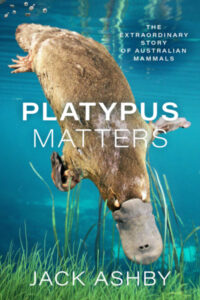 We’ve all heard unkind remarks about the iconic platypus of Australia; that it looks as thought Mother Nature made it out of spare parts, or while drinking heavily, or on a dare. And admittedly, when faced with a fur-covered animal that looks more or less like a small beaver but has the bill of a duck, in which the males have venon-loaded spurs on their hind legs and the females lay eggs, it’s difficult not to respond with a bit of humor to cover our discomfort at just how limited our imaginations can be in the face of the vast potential of evolution. However when it comes to the mammals, both past and present, of Australia, the platypus – for all its (to us) “unusual” adaptations – is just one of an enormous treasure trove of natural wonders.
We’ve all heard unkind remarks about the iconic platypus of Australia; that it looks as thought Mother Nature made it out of spare parts, or while drinking heavily, or on a dare. And admittedly, when faced with a fur-covered animal that looks more or less like a small beaver but has the bill of a duck, in which the males have venon-loaded spurs on their hind legs and the females lay eggs, it’s difficult not to respond with a bit of humor to cover our discomfort at just how limited our imaginations can be in the face of the vast potential of evolution. However when it comes to the mammals, both past and present, of Australia, the platypus – for all its (to us) “unusual” adaptations – is just one of an enormous treasure trove of natural wonders.
From platypuses and possums, through wombats, echidnas, devils, and kangaroos, to quolls, dibblers, dunnarts, and kowaris, Jack Ashby knows them all; and in his recently published Platypus Matters; The Extraordinary Story of Australian Mammals, he guides his readers on a tour of their lives, their evolutionary stories, and the challenges they face in the modern world.
As a boy, the television nature program presentations of the most popularly identifiable animals profiled in this book were an integral part in the development of my life-long passion for natural history, however as Mr. Ashby also explains in his book, some of the tropes that have long accompanied popular presentations of these animals are now problematic in efforts to preserve them in the wild. Being one who enthusiastically relishes opportunities to correct mistaken understandings in my own knowledge – and sometimes irritatingly in urging others to do likewise – I am very much looking forward to a thorough reading of Platypus Matters to discover more about and improve what I thought I already knew about these fascinating creatures.
